Aronia melanocarpa is no ordinary shrub. It is a three-season pleaser: spring flowers, summer fruit, and vivid autumn color that is an intense backdrop for the persistent black fruit. Aronia is also a native North American superfood, which we can snack on through winter. (So make that four seasons!). The beautiful plant is low maintenance, cold hardy, and beneficial to pollinators and wildlife.
When Aronia ripens in late summer and into fall, the raw fruit justifies its common name of chokeberry. It is tannic. But once harvested it can be turned into juice, syrup, and a fermented dried fruit that finds its way into all kinds of dishes and bakes. It is a staple in my own kitchen.
Here’s why…
Photography by Marie Viljoen.

The superfood hype can feel overblown, but when a fruit drives sales for the supplement industry, a person becomes curious. Aronia berries (although technically the fruit is a pome, like an apple, not a berry) contain exceptionally high levels of anthocyanins, a subclass of phenolic phytochemicals that are powerful antioxidants, associated with cardiovascular health, with antidiabetic, anticancer, anti-inflammatory, and antimicrobial actions. That’s quite a resumé.
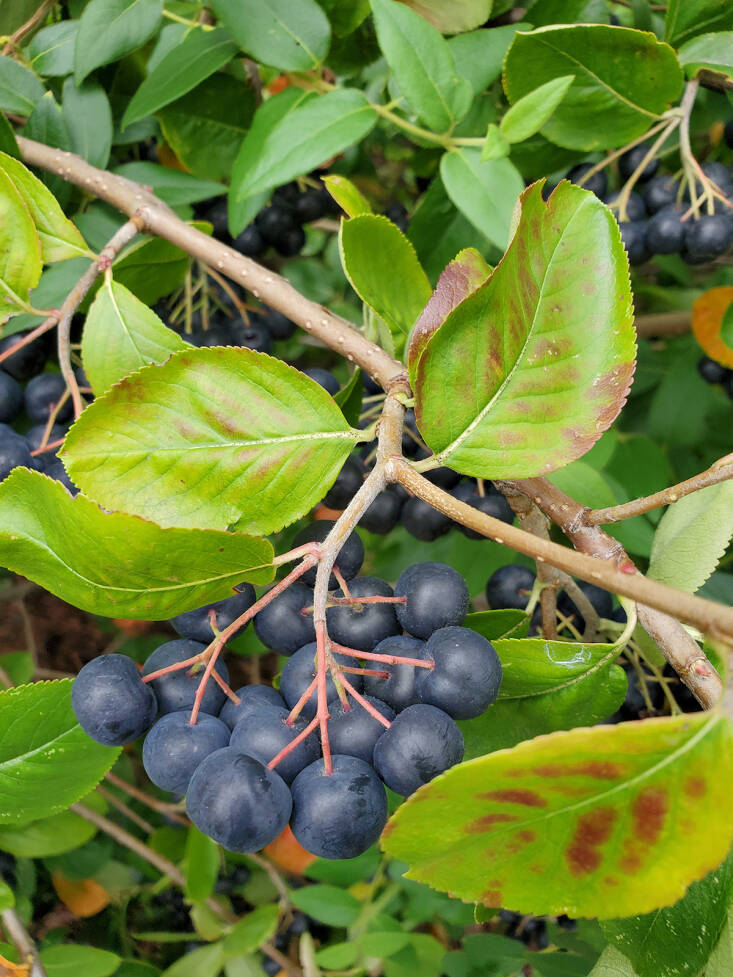
The species we’re focusing on is A. melanocarpa, black chokeberry (melano means black). Red chokeberry, A. arbutifolia, is just as lovely a shrub and can be grown in the same way, but its red fruit is smaller and much less juicy. It is interesting that North American Aronia is widely farmed in Europe but minimally grown for harvest on its home continent, although Minnesota has a small but vibrant Aronia scene.
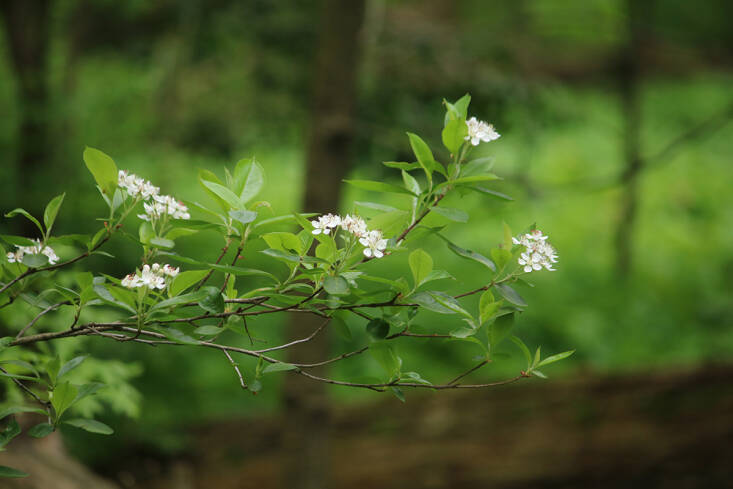
Aronia grows naturally as an understory shrub in woodland or in boggy environments, in USDA zones 3 – 8, from Canada through Kentucky. It is extremely cold-hardy, and tolerates humid summers, but not prolonged drought.

The blossoms are pretty and hawthorn-like in appearance and exceptionally appealing to pollinators.

How do you know when Aronia is ripe? In late summer it will become a deep purple-black, at its most plump and juicy. Biting into the fruit will release a burst of brilliant red, tannic juice.

Bletted by a touch of frost, late-season Aronia can be more palatable raw. It is not unusual to see the fruit persisting into early winter, when it feeds resident birds and critters.

That juice is exceptionally interesting in kitchen—for cooking, and for drinking.
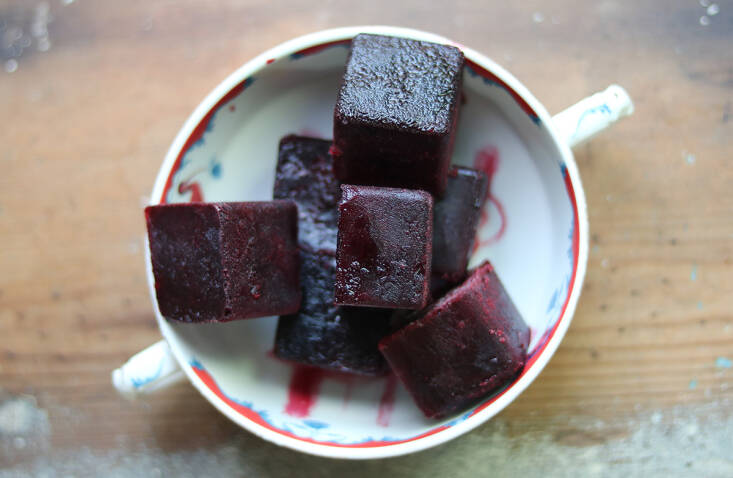

Fresh, Aronia juice is frothy and deeply red—you can almost see the antioxidants. It is wonderful in a shaken drink, with or without alcohol. In cooking, the juice is exceptionally useful: In winter I add it in quarter cup increments to create layers of flavor in cold-season braises and stews, borscht, or slow-cooked red cabbage—in the way you might use red wine or red wine vinegar. In late summer, before I freeze most of it, the fresh juice adds serious interest to a farmers market ratatouille.
(For the detail-oriented: 3 cups of Aronia yield 1 cup of juice.)

My favorite way to preserve Aronia is to ferment with sugar to create a syrup. I like a simple sugar-extraction method for the syrup—just fruit with an equal weight of sugar in a jar (see this Fermented Elderberry Syrup recipe and substitute Aronia), which is left loosely covered until syrup forms, about three weeks, for Aronia. I have left the fruit fermenting for up to four months, though, and the flavor just improves. I bottle the syrup and then air-dry the leftover fruit. The result of the drying is a craisin-like delicacy.

Once dry, the Aronia fruits are chewy and sweet while retaining their dark, antioxidant character. They are destined for an endless evolution of savory appetizers, salads, entrées and bakes, savory and sweet.



Cooked with herbs and spices the fermented fruit makes a memorable chutney for cheese boards and charcuterie plates. It is wonderful slathered onto sandwiches with butter, peppery arugula, and grated cheese.
All from one, puckery fruit.
Anytime is a good time to plant Aronia. Choose your spot, and start shopping.

Aronia Chutney
Use fresh Aronia, or the sweet fruit leftover after making fermented Aronia syrup. If using the latter, use half the amount of sugar called for below.
- 1 Tablespoon juniper berries
- 10 spicebush (Lindera benzoin) berries, optional
- 6 allspice berries
- 3 cloves
- 7 cups (about 2 lbs) ripe or fermented Aronia
- 1 cup sugar
- 1 cup raisins
- 1 medium onion, very finely chopped
- 5 slices ginger, peeled
- 2 teaspoons chile flakes
- 1 teaspoon freshly cracked pepper
- 2 teaspoons salt
- ½ cup sherry vinegar
- 1 cup water
Combine all the ingredients in a large pot. Heat the mixture gradually over medium heat, stirring often to prevent any sticking and scorching. When foam rises, skim it off. Cook at a steady simmer until the Aronia and raisins are tender and the mixture resembles jam—about 30 minutes. Taste for seasoning.
Allow the chutney to cool a little before pouring into sterilized glass jars and sealing. It is shelf stable but should be chilled after opening.
For more fruit-based recipes, see:
- Garden to Bar: A Summer Cocktail Starring Homemade Elderberry Syrup
- So You Grew a Lemon: Now What? 7 Easy Ideas
- Pawpaw: A Native Fruit that Tastes Like the Tropics


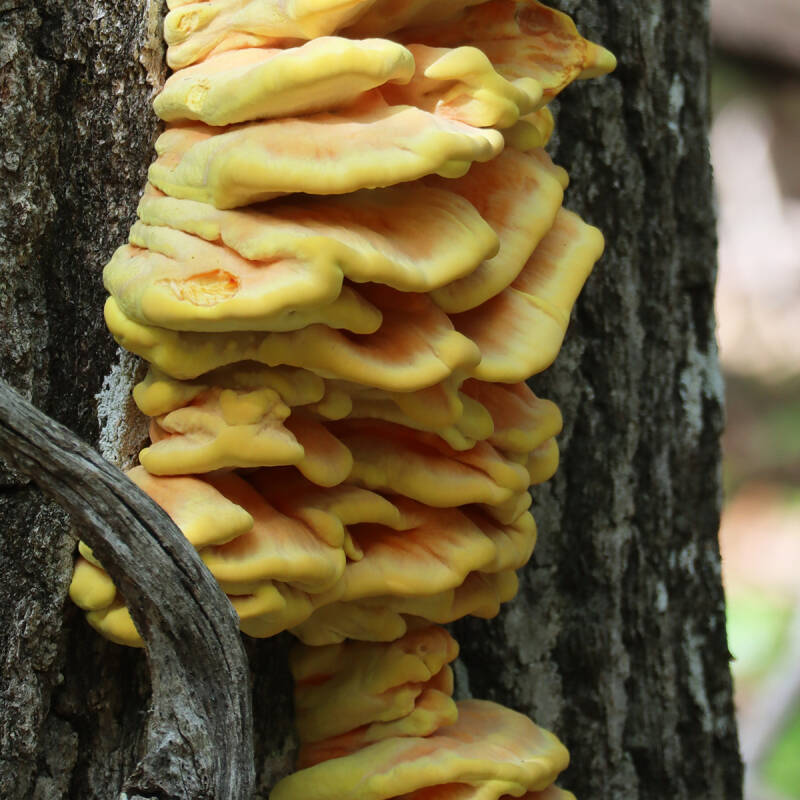

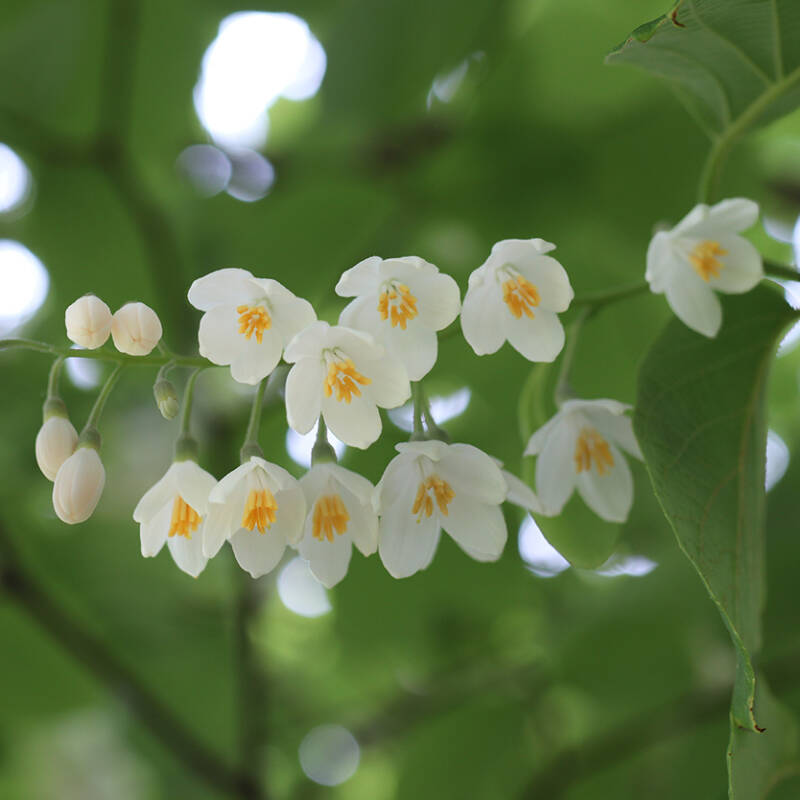




Have a Question or Comment About This Post?
Join the conversation